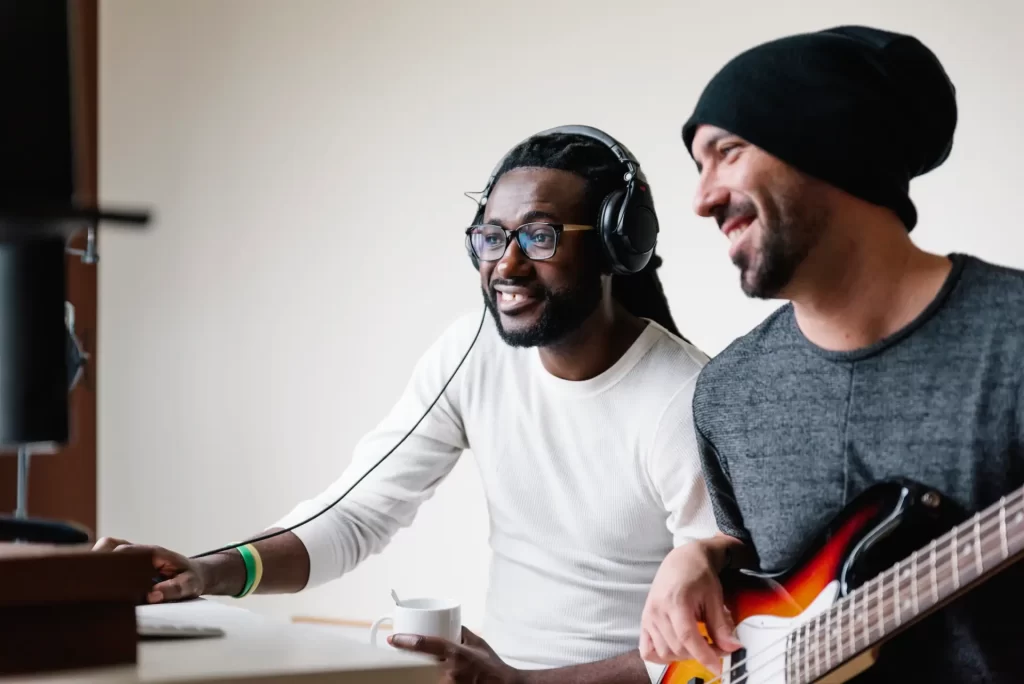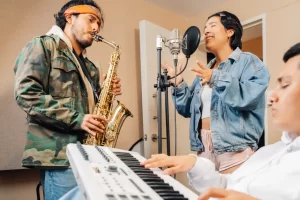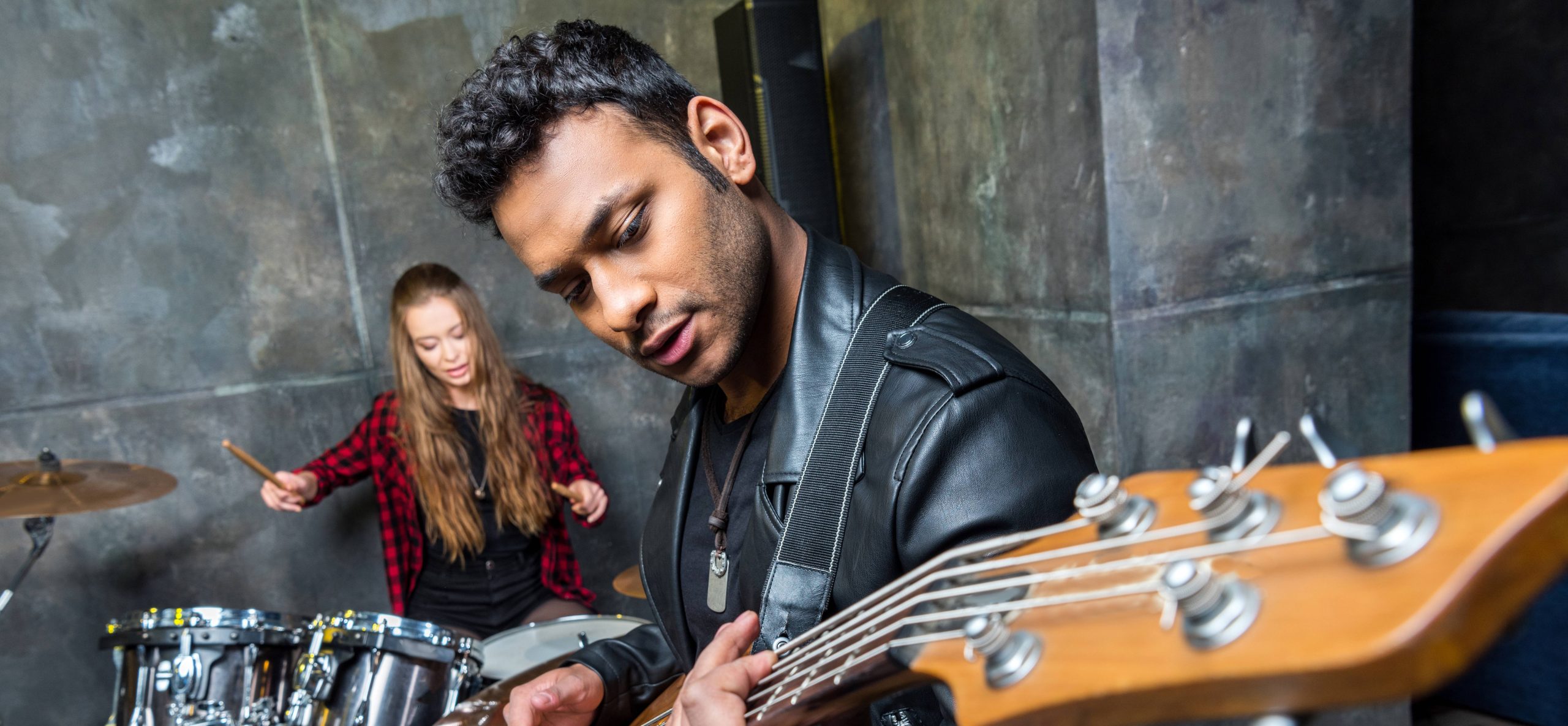Collaboration isn’t just a creative outlet—it’s a powerful strategy for growth. Whether it’s a feature on a track, a joint tour, or a simple social media shoutout, working with other artists can open doors to new audiences and take your career to the next level. By teaming up with like-minded musicians, you can amplify your reach, merge fanbases, and create something truly unique that resonates with listeners.
Collaboration offers more than just exposure. It’s an opportunity to challenge your creativity, learn from others, and form connections that can benefit you throughout your career. A well-executed partnership can bring fresh perspectives to your music, spark ideas you never considered, and create a buzz that’s hard to achieve alone.
Let’s explore why collaboration is such a valuable tool for artists, how to find the right partners, and the types of joint projects that can make the biggest impact. Whether you’re an up-and-coming musician or an established artist looking to expand your fanbase, collaboration is a key to unlocking new possibilities. Ready to see how partnering with others can supercharge your music career?
Why Collaboration Matters
Collaboration has always been a cornerstone of the music industry, but its importance has grown exponentially in today’s interconnected world. Partnering with other artists allows you to tap into new audiences, bridging the gap between fanbases and creating opportunities to grow your reach. When two artists collaborate, their combined appeal often sparks curiosity among fans, leading to increased streams, social media engagement, and event attendance.
But it’s not just about exposure—collaboration also breathes new life into your creativity. Working with someone who brings a different style, perspective, or skillset to the table can help you break out of your comfort zone and push boundaries. This creative synergy often results in music that’s more dynamic and engaging, appealing to a broader range of listeners.
Furthermore, collaborations build credibility. When fans see you working with another respected artist, it reinforces your standing in the music community. It shows that you’re adaptable, innovative, and valued by your peers.
From chart-topping duets to viral TikTok challenges, collaborations have proven time and again to be a game-changing strategy for artists. It’s not just about sharing the spotlight—it’s about creating something that neither of you could achieve alone, leaving a lasting impression on fans old and new.
Finding the Right Collaborators
Choosing the right collaborator is essential for a successful partnership that resonates with your audience and theirs. While it might be tempting to reach out to the biggest names, the best collaborations often happen when artists share a genuine connection and complement each other’s style, audience, and goals.
Start by looking for artists whose music aligns with yours. Similar genres or overlapping themes in your lyrics can create a natural synergy. But don’t limit yourself—sometimes, contrasting styles lead to exciting, unexpected results that capture attention. Think about what you bring to the table and what qualities or skills would balance and enhance your work.
Consider your audiences as well. Collaborating with someone whose fanbase overlaps with or complements yours ensures your music will reach listeners who are likely to connect with it. Tools like Spotify for Artists or social media analytics can help identify potential partners with a shared or compatible audience.
When reaching out, be professional and authentic. Personalize your pitch, showing genuine appreciation for their work and a clear idea for how the collaboration could benefit you both.
Ultimately, the best collaborators are those who share your passion, vision, and work ethic. Together, you can create something that amplifies both your artistry and your fanbase.
Types of Collaborative Projects
Collaboration in music comes in many forms, each offering unique ways to grow your fanbase and strengthen your artistry. The key is to choose projects that align with your goals and showcase the best of what you and your collaborator bring to the table.
1. Song Collaborations: This is the most traditional form of collaboration. Whether it’s co-writing, featuring on each other’s tracks, or remixing a song, these projects allow you to blend your styles and introduce your music to new audiences. A well-promoted track can quickly gain traction on streaming platforms and playlists.
2. Content Collaborations: Social media has opened up endless possibilities for creative partnerships. From TikTok duets to Instagram live sessions, you can co-create engaging content that showcases your personality and music. Joint giveaways or challenges can also spark excitement among fans.
3. Live Performances and Tours: Sharing a stage or going on tour together can help you build stronger connections with your fans and introduce you to your collaborator’s audience in a powerful, in-person setting.
4. Cross-Promotional Efforts: Shoutouts, playlist swaps, and guest appearances on each other’s platforms are simple yet effective ways to collaborate.
Each type of project expands your reach, deepens fan engagement, and sets the stage for future opportunities.
Maximizing the Impact of a Collaboration
A successful collaboration doesn’t end with creating something great—it’s about ensuring it reaches the widest and most engaged audience possible. To truly maximize the impact of a joint project, you need a strategic approach to promotion, engagement, and execution.
1. Plan a Unified Launch Strategy: Coordinate with your collaborator to align on release dates, promotional materials, and messaging. A synchronized effort across both of your platforms ensures maximum visibility and engagement. Utilize teasers, countdowns, and exclusive sneak peeks to build anticipation.
2. Leverage Each Artist’s Strengths: Identify what each of you does best. If one of you excels at social media content and the other has a stronger live performance presence, divide responsibilities to capitalize on your combined strengths.
3. Engage Both Fanbases: Create interactive content that invites fans from both sides to participate, such as Q&A sessions, live streams, or challenges. Highlight behind-the-scenes moments from your collaboration to make fans feel like insiders.
4. Utilize Multiple Platforms: Promote your project across all available channels—streaming platforms, social media, email newsletters, and even live events. The more touchpoints, the greater the reach.
5. Measure and Adapt: Track engagement metrics to understand what’s working and adjust your strategy accordingly.
By amplifying your collaboration’s reach, you can transform it into a career-defining moment for both artists.
Overcoming Challenges in Collaboration
Collaboration can be incredibly rewarding, but it’s not without its challenges. Working with another artist means merging two creative visions, which can sometimes lead to conflicts or misunderstandings. However, by addressing potential challenges head-on and fostering open communication, you can ensure a smooth and successful partnership.
One of the most common hurdles is creative differences. Each artist brings their unique perspective and ideas, and while this can be a strength, it may also lead to disagreements. The key is to approach these moments with mutual respect and a willingness to compromise. Discuss your goals and vision for the project early on to find common ground and avoid misalignment later.
Logistics can also be a stumbling block, especially when coordinating schedules, recording sessions, or promotional efforts. Clear and consistent communication is essential. Use tools like shared calendars or project management apps to keep both parties on the same page.
Finally, it’s crucial to set clear expectations. Whether it’s dividing responsibilities, sharing revenue, or determining how the project will be promoted, a written agreement can help prevent disputes.
While challenges are inevitable, they’re also opportunities to strengthen your partnership and grow as an artist. With patience and collaboration, you can turn obstacles into stepping stones for success.
Real-Life Examples of Successful Collaborations
The power of collaboration is evident in some of the most iconic partnerships in music history. These collaborations not only pushed creative boundaries but also introduced artists to entirely new audiences, resulting in massive success for all involved.
One standout example is Lady Gaga and Beyoncé’s “Telephone.” This powerhouse collaboration combined two global fanbases and showcased their individual talents while creating a track that became a cultural phenomenon. The music video alone, with its cinematic storytelling and memorable visuals, became a viral sensation, proving how a joint effort can elevate a project beyond expectations.
Another iconic partnership is Ed Sheeran and Justin Bieber’s “I Don’t Care.” Both artists brought their signature styles to the table, blending Bieber’s smooth pop vocals with Sheeran’s heartfelt songwriting. The result was a global hit that dominated charts and streaming platforms, demonstrating how collaborations can amplify an artist’s reach while maintaining their unique sound.
Even genre-crossing projects have seen tremendous success, such as Lil Nas X and Billy Ray Cyrus’s “Old Town Road.” This unexpected pairing bridged country and hip-hop audiences, resulting in one of the longest-charting Billboard hits of all time.
These examples highlight how strategic and creative collaborations can not only expand fanbases but also redefine what’s possible in music.
To Sum It Up
Collaboration is one of the most effective tools for artists looking to expand their fanbase, push creative boundaries, and make a lasting impact in the music industry. By partnering with other musicians, you have the opportunity to merge fanbases, bring fresh perspectives to your work, and create something that resonates on a deeper level. Whether it’s through a feature on a track, a joint tour, or a simple cross-promotion on social media, collaboration opens doors that are often impossible to reach alone.
The key to successful collaboration lies in finding the right partner, planning strategically, and committing to the shared vision. Challenges such as creative differences or logistical hurdles may arise, but they can be overcome with clear communication, mutual respect, and a willingness to adapt. Every effort you invest in the partnership not only benefits the project but also strengthens your personal growth as an artist.
Ultimately, collaborations are more than just a marketing tool—they’re a way to connect with audiences, inspire innovation, and leave a lasting impression. Whether you’re an emerging artist or an established name, embracing the power of collaboration can take your career to new heights and create music that truly stands the test of time.




